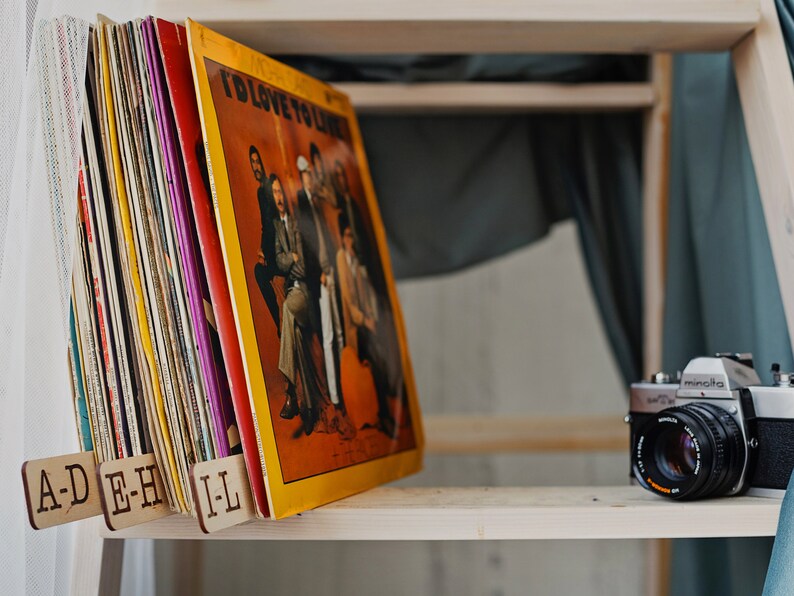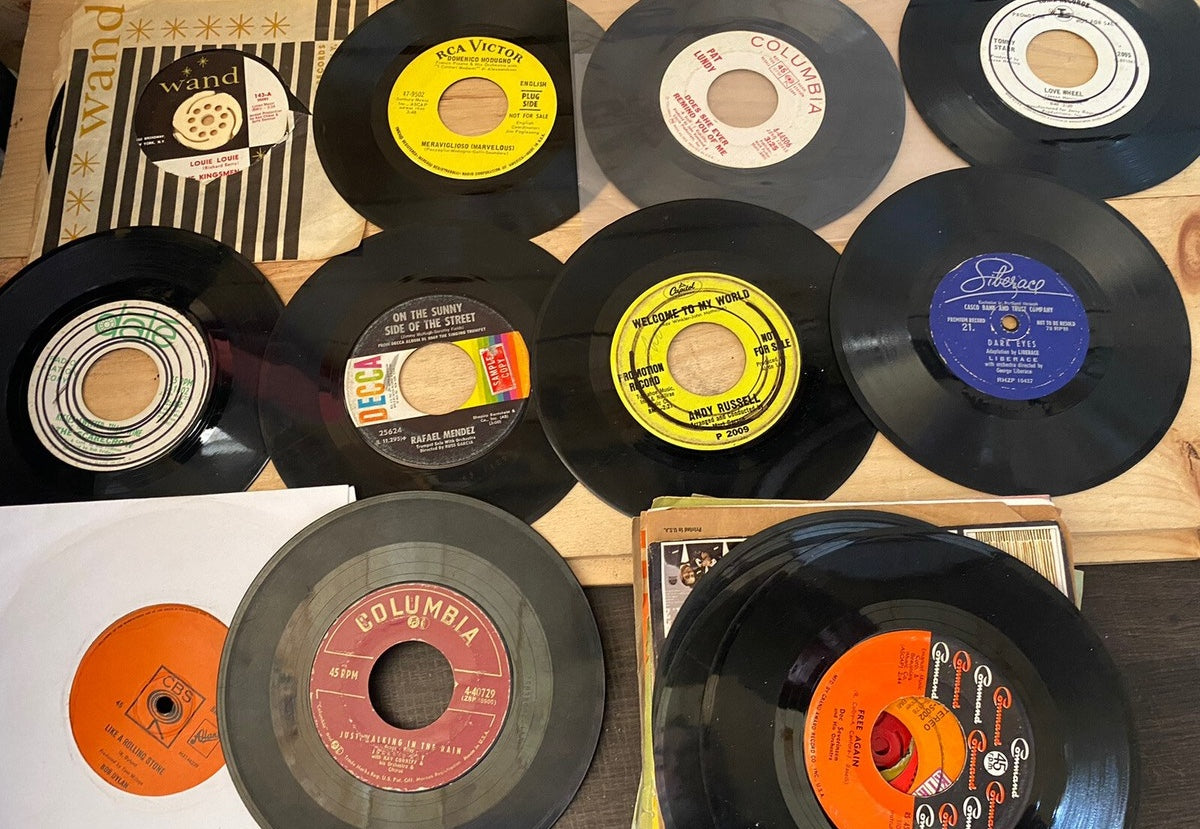The resurgence of vinyl has brought enormous joy to collectors around the world — but it has also attracted counterfeiters and low-quality reissue manufacturers who are eager to profit from demand. Whether you’re hunting for a rare jazz original, a first-press rock classic, or a limited-edition colored vinyl release, knowing how to tell the difference between an authentic pressing and a fake can save you disappointment and money.
At STMedia, authenticity is everything. We believe every collector deserves confidence when building their vinyl library. This guide walks you through the essential signs of authenticity and the subtle details that separate genuine pressings from counterfeits or unannounced reissues.
Examining the Record Label and Jacket Artwork
The first place to look for authenticity clues is the record label and jacket. Real labels tend to feature crisp printing, accurate typography, and proper color tones. Counterfeit labels often display small but telling imperfections — slightly blurry text, misspelled words, incorrect fonts, misplaced logos, or missing copyright information.
The album jacket itself can reveal even more. Authentic jackets typically have sharp, well-printed artwork, clean color reproduction, and correct scaling. Counterfeiters often cut corners, resulting in pixelated covers, faded colors, glossy finishes where the original was matte, or flawed spine printing. If the artwork gives you the feeling that something is “off,” it’s worth digging deeper.
Using Matrix Numbers and Runout Etchings for Verification
One of the most reliable ways to authenticate a record is by examining the matrix numbers and etchings in the runout groove. These markings — often hand-etched by the mastering engineer — indicate the pressing plant, batch, and sometimes the engineer’s initials. Authentic pressings nearly always feature these details.
Fake or unofficial reissues frequently lack proper etchings or display machine-stamped codes that do not match known originals. If the matrix numbers don’t correspond with collector ndatabases, or if there are no markings at all, the record may not be authentic.
Feeling the Weight and Texture of the Vinyl
The physical feel of a record often says more than visual inspection. Original pressings from different decades tend to have weight ranges specific to their time — some heavier, some lighter, depending on industry production standards. Counterfeit records, on the other hand, commonly use cheaper materials, resulting in lightweight, hollow-feeling vinyl that warps easily.
If a record claimed to be a 1970s first press suddenly appears as a flawless 180-gram heavyweight, it’s worth questioning authenticity. True vintage pressings rarely follow modern audiophile weight standards.
Recognizing the Aging of Vintage Materials
Authentic vintage jackets naturally age over decades. They may develop soft paper wear, slight discoloration, or a characteristic “old paper” scent. Counterfeit or modern reprinted covers, by contrast, often have the smell of fresh ink, chemical adhesives, or new cardboard.
Though this method isn’t scientific, many seasoned collectors can distinguish a reprint simply by holding the jacket and noting its scent, texture, and overall aging.
Checking Copyright and Catalog Details
Every authentic vinyl release includes copyright information, catalog numbers, manufacturing details, and label addresses. These must align with the era of production. Counterfeits frequently display mismatching dates, missing legal text, or catalog numbers that appear nowhere in official label archives.
If the copyright year printed on the back cover doesn’t match the pressing information, or if the catalog number appears only on suspicious online listings, the record should be treated with caution.
Identifying Sound Quality Differences Between Real and Fake Pressings
Sound quality remains one of the clearest signs of authenticity. Genuine pressings are typically mastered from high-quality analog or studio-approved digital sources. They offer warmer midrange, balanced bass, smooth treble, and a wide dynamic range.
Fake records often come from poor-quality digital files — sometimes even ripped from CDs or MP3s. These recordings sound compressed, flat, blurry, or excessively noisy. If a supposed first pressing lacks depth and clarity, chances are it is not what the seller claimed.
Understanding Price Signals and Suspicious Deals
While it’s possible to find great deals, extremely low prices for historically rare records are almost always a warning sign. Highly collectible albums — especially originals from labels like Blue Note, Impulse!, Prestige, or early rock pressings — rarely sell cheaply unless there is a major issue. If a listing price feels unrealistic, there is usually a reason.
Buying From Trusted Sources and Avoiding Grey-Market Reissues
The best way to avoid counterfeit vinyl is to purchase from vendors who prioritize authenticity and transparency. Reputable retailers, established record stores, and trusted online sellers provide accurate grading, photographs, descriptions, and customer support. At STMedia, every record is carefully sourced to ensure authenticity, high quality, and collector-grade standards.
Be cautious with vague terms like “European Import,” “Unofficial Repress,” or “Special Edition Reissue.” These often indicate unlicensed or poor-quality transfers that may look attractive but are not legitimate.
When in Doubt, Ask an Expert
Authenticating vinyl can be challenging, especially for beginner collectors and buyers of high-value pressings. When uncertainty arises, the best step is to consult someone with experience. Collectors, archivists, and trusted retailers can help verify authenticity using details that may not be obvious at first glance.
At STMedia, we are always happy to guide collectors through identifying original pressings, understanding reissues, and navigating the world of rare vinyl.
Building a Collection With Confidence
Ensuring the authenticity of a vinyl record requires patience, attention to detail, and a working knowledge of labels, pressings, and production standards. By examining the artwork, matrix numbers, sound quality, catalog information, and seller credibility, you can protect yourself from counterfeits and build a collection filled with genuine, high-quality pressings.
As vinyl continues to rise in popularity, knowledge becomes your best tool for confident collecting. And if you ever need guidance, we’re here to help.
Contact Us for Help Authenticating or Finding Rare Vinyl
Have questions about identifying original pressings?
Need help choosing authentic limited editions or rare collectibles?
We’re always here for you.
📞 Phone: +1 (786) 778-7457
🌐 Shop authentic vinyl: STMedia
Your next great vinyl discovery begins with a conversation.
Read more

Limited-edition vinyl records have become some of the most sought-after collectibles in the music world. Whether you're drawn to colored vinyl, exclusive pressings, Artist Series reissues, or speci...

A vinyl collection is more than music — it’s a gallery of sound, color, and history. Whether you own 50 records or 5,000, the way you organize, display, and care for your vinyl can transform your l...

